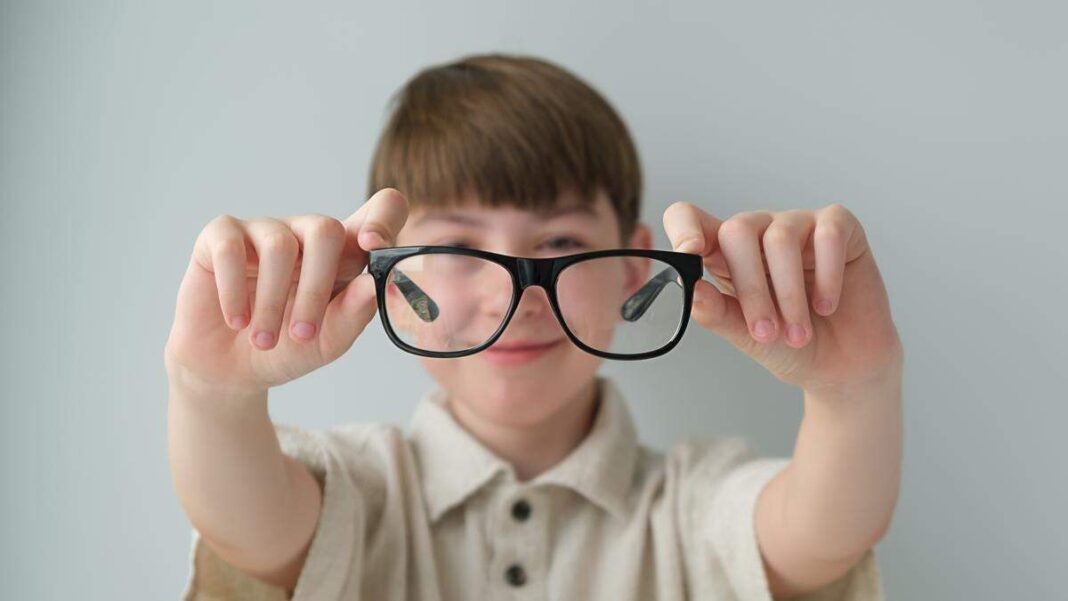We All Live in a World Dominated by Smartphones: The Impact on Myopia
In today’s digital age, it’s hard to escape the grasp of smartphones. Everywhere you look, people are glued to their screens, whether walking their dogs, waiting for a bus, or even sitting in a doctor’s waiting room. This pervasive behavior isn’t limited to adults; children and teenagers are equally immersed in their devices, foregoing outdoor activities for screen time. What many fail to realize is the detrimental impact this excessive screen use can have on our vision, leading to a rise in myopia cases.
A recent study conducted by researchers from the University Sun Yat-sen in Guangzhou revealed alarming statistics – by 2050, nearly half of the global population is projected to be affected by myopia, with a growing number of children falling victim to the condition. Currently, one in three children and adolescents are myopic, a number that is expected to rise to four in ten by 2050, marking a concerning trend.
Myopia, characterized by the elongation of the eyeball, can result in blurred vision as images are focused in front of the retina rather than on it. While genetics play a role, environmental factors such as prolonged near-vision tasks and lack of natural light exposure are significant contributors to the increasing prevalence of myopia.
To combat the progression of myopia, experts recommend regular breaks from screen time, exposure to natural light, and following the 20-20 rule – taking a 20-second break to look into the distance after 20 minutes of close-up work. Early detection of myopia is crucial, as it allows for timely intervention and management strategies to slow down its progression.
Various approaches, including defocus lenses, orthokeratology, and low-dose atropine eye drops, can help mitigate the effects of myopia and reduce the risk of associated eye diseases. However, prevention remains key, especially through encouraging outdoor activities and reducing screen time, particularly in children.
While the rise of myopia presents challenges globally, access to eye care and treatment options in developed countries like Luxembourg mitigates the impact. Nevertheless, promoting outdoor activities and limiting screen time are essential strategies to combat the growing prevalence of myopia and safeguard eye health.
Frequently Asked Questions
-
What is myopia?
Myopia, commonly known as nearsightedness, is a refractive error where distant objects appear blurry due to the elongation of the eyeball.
-
How prevalent is myopia among children and adolescents?
Currently, one in three children and teenagers are affected by myopia, with projections indicating a rise to four in ten by 2050.
-
What are the risk factors for developing myopia?
Prolonged near-vision tasks, lack of natural light exposure, and genetic predisposition are significant risk factors for myopia development.
-
How can myopia progression be slowed down?
Strategies such as regular breaks from screen time, exposure to natural light, and appropriate optical interventions like defocus lenses can help slow down myopia progression.
-
What are the potential complications of untreated myopia?
Untreated myopia can increase the risk of retinal tears, retinal detachment, glaucoma, and cataracts, highlighting the importance of early detection and management.
-
Is myopia curable?
While myopia cannot be cured, early detection and intervention can help manage the condition effectively and reduce the risk of complications.
-
What are some preventive measures for myopia?
Encouraging outdoor activities, limiting screen time, and following eye care guidelines such as the 20-20 rule can help prevent the onset and progression of myopia.
-
How does myopia impact children’s academic performance?
Poor vision due to myopia can affect children’s academic performance, underscoring the importance of regular eye check-ups and early intervention.
-
Are there disparities in myopia prevalence between developed and developing countries?
While myopia rates vary globally, access to eye care and treatment options in developed countries like Luxembourg helps mitigate the impact of the condition, unlike in some developing regions.
-
What role does outdoor activity play in preventing myopia?
Engaging in outdoor activities, exposure to natural light, and reducing screen time are crucial in preventing myopia and promoting overall eye health, especially in children.
Tags:
Smartphones, Myopia, Eye Health, Screen Time, Outdoor Activities, Vision Care

